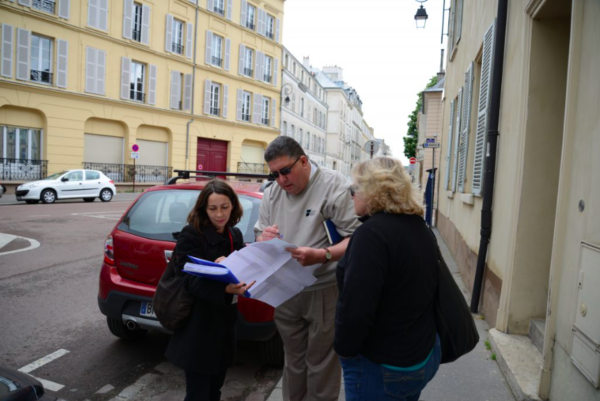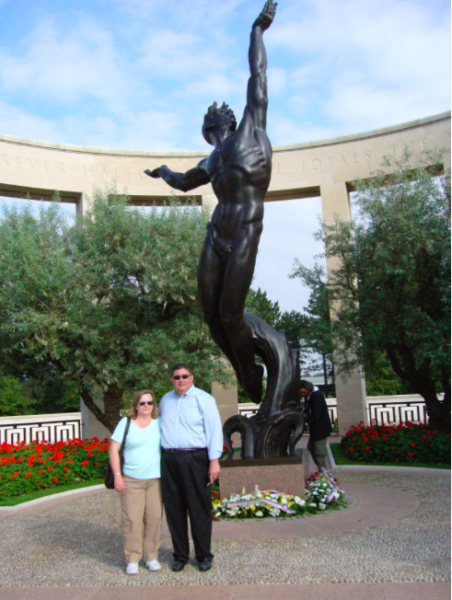
I can’t tell you how many times Sandy and I have hired private tour guides while traveling in Europe. We want someone for a specific guided tour. Typically it is for a historical theme and the right guide will have some credentials that fit the themed walk we want to experience. Here a couple of stories.
Raphaelle Crevat was our guide several years ago when we were researching the French Revolution and Medieval walking tour books. We hired Raphaelle for the walk through Versailles Village but it was evident very quickly that we had hired someone with exceptional skills. For every hour we walked, it became clear that she had put several hours of research into our theme. I hired her for another day in Paris while we were there (she helped us find out where exactly Marie Antoinette’s guillotine was set up). You can reach Raphaelle at raphaellecrevet@yahoo.fr.
Seven years ago, we hired Jacques to take us for a full day to the Normandy Beaches. He is a retired Sorbonne professor who more than 30 years ago decided to become a full-time guide. He specializes in tours of the Normandy Beaches.
Jacques was born, raised, and still lives in Caen. He was five years old during the battle for Caen during D-Day. The citizens left the city and dug trenches out in the fields with wooden planks used as a roof over their trenches. Jacques was playing in the field one day when a dogfight occurred overhead. As the bullets hit the ground they splintered into very sharp fragments. One went into Jacques’ neck. His parents couldn’t find a French doctor and the German doctors were under orders not to treat the locals. Fortunately, they did find a German doctor who was willing to extract the shrapnel from Jacques’ neck (and likely saved his life).

Jacques has been one of the top guides over the years for tours of the battlefields and he was the advisor to Steven Spielberg for the movie Saving Private Ryan. While at the American Cemetery, he guided us to a spot near some pine trees where the first and last scenes of the movie were filmed on a late Sunday afternoon. Filming wrapped up at about six o’clock. Mr. Spielberg turned to Jacques and told him that he had not yet come up with the name for Tom Hanks’ character. Jacques told us to turn around just as Mr. Spielberg had done. There was the cross with the name, “Capt. Miller.” That’s how Mr. Hanks’ character got its name.
I have so many other wonderful stories about Jacques and his experiences with men who returned, their children who came back to retrace their father’s path and now, the grandchildren who are coming for Jacques’ personal tour of the battlefields, beaches, and cemeteries.
Many travelers think the cost of a private guide is prohibitive. It really isn’t when you consider some of the benefits: you don’t have to fight the crowd, ask as many questions as you’d like, the walk can be customized, your guide will get you through the lines without waiting, they are know many sights you would never see on a “regular” tour, takes you to some great restaurants, and quite often, they are more knowledgeable.
So please consider jumping in and hiring a private guide. Oh, by the way, there are also the walking tour books you can purchase.
Do we have a lot of stories? Of course we do. I’m looking forward to sharing these with you. Please continue to visit our newsletter and blog. Perhaps you’d like to subscribe so that you don’t miss out on the most recent newsletter and blog posts.
Thanks so much for following my newsletter and blogs as well as my little journey through this incredibly interesting process of writing a series of niche walking tour books based on European historical periods or events.
Please note that I do not and will not take compensation from individuals or companies I mention or promote in my blog.
Are you following us on Facebook and Twitter?
Copyright © 2015 Stew Ross

